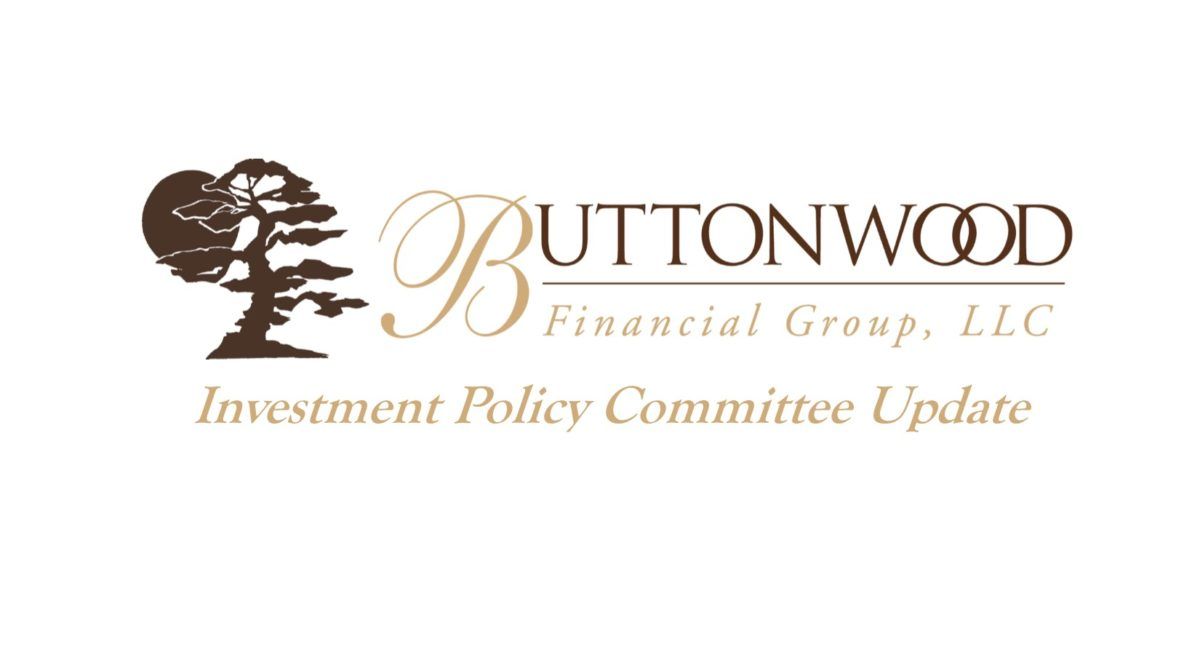Buttonwood Investment Policy Committee Update – February 2022
Frustration: Covid and Inflation
Following historical trends of early economic cycle returns, on the back of low interest rates and economic stimulus, the S&P 500 once again posted solid gains in 2021. As 2022 rolled in, increasing concerns about the future of the economy had investors in a mood to take profits.
Buttonwood’s core investment allocations are designed to take advantage of longer-term investment views with the flexibility to take advantage of shorter-term trends. We believe combining these strategies will allow us to produce a more consistent rate of return through economic cycles.
Following lockdowns, in early 2020 we focused on our theme of “participate but defend.” We rebalanced portfolios to bring allocations in line from the market volatility caused by covid. We also proactively took advantage of tax benefits from tax loss harvesting. By early 2021 we continued to add to stocks based on strong underlying fundamentals and were leaning further into cyclicals as part of the recovery. In mid ’21 we were expanding exposure to sectors we believed would benefit returns with rising inflation; commodities, energy, corporate credit and TIPS. Late year , with several stock sectors starting to show weakness, we remained with our reflationary themes, but shifted to less active risk and reduced sensitivity to sector specific exposure.
On our path to more consistent returns, generally we don’t take big bets and tend to stay within 10% of target allocations. For example, our overall stock exposure in a 60% stock/ 40% bond allocation will typically fall between 55% and 65% at any given point in time. We use this 10% to adjust exposure to regional, sector, factor or changing investment themes.
As we move into 2022, we believe we are continuing the transition from earlier stages of the economic cycle to mid cycle stages. Not unexpected, we have seen major stock indices join sub sectors, and stock markets as a whole decline. In early February we completed our most recent rebalance to take advantage of stock market weakness. Overall, we remain optimistic on the economy and thus the stock market but continue to transition investments toward base allocations and increase our hedges against stock market risk.
Positioning for mid cycle
After a dramatic rise in equity market prices in the covid economic recovery, we have seen an unprecedented level of volatility to start 2022. We believe the source of that volatility is largely centered around a combination of pandemic related uncertainty coupled with a change in direction of Fed policy, spurred by resurgent inflation. We believe the change in Fed policy marks the change from early to the mid-stage of this economic cycle.
When the Fed starts to raise rates, we tend to see stock market volatility. Statistically, a decline of 10% is not uncommon. Between 1980 and 2020, the S&P 500 experienced 17 corrections. The markets generally don’t like uncertainty: How many hikes? For how long? How fast, and more can leave the markets guessing. Eventually these answers start to congeal and the focus returns to the underlying economy and earnings. Despite these unknowns, we still see many positive signs of economic strength and remain generally risk-on in our portfolio positioning.
For our most recent rebalance in February 2022, we focused on four key themes:
- Maintaining a pro-risk view but marginally reducing both our overweight to equities and our tilt to cyclical assets. This continues our theme of moving portfolio risk closer to benchmark amidst increased uncertainty.
- Begin to proactively pull back on some successful early-stage inflation trades; an anticipatory move given stretched valuations for inflation protection, easing supply-chain constraints, and a more hawkish Fed.
- We have increased net exposure to U.S. treasuries and continue rotation out of credit, seeing both a tactical opportunity to capitalize on the recent selloff in rates and a strategic opportunity to improve the impact of our fixed income exposure as a portfolio diversifier.
- In a counter to this, for fixed income-heavy portfolios, we have also added convertible bonds. We believe this positioning will provide exposure to a hybrid source of both growth with the upside potential of equities (and take advantage of the larger correction in the technology sector), and income with the downside resiliency of bonds and less sensitivity to rising rates.
In the year ahead, we expect to see significant reversals of pandemic-driven economic trends – notwithstanding the always-present risk of a negative growth shock (e.g., a more lethal strain of Covid emerging). In our view, these reversals represent normalizations, with more muted inflationary impulses in 2022 particularly in the second half of the year; many of the goods and supply chain shortages responsible for more than half of the high price pressures have either already faded or are beginning to fade. These now-stale inflationary catalysts include the Fed’s aggressive quantitative easing and near-zero-interest-rate-policies, stimulus checks and expanded unemployment benefits, prospects of excessive fiscal stimulus, and severe supply-chain disruptions made worse by a disproportionate surge in “stay-at-home” demand for goods. While we still expect above-average inflation to persist, current market expectations exceed our proprietary forecasts and embolden us to begin to unwind some of our most inflation-sensitive hedges.
We know from history that the beginning of the Fed’s tightening cycle can precipitate elevated levels of volatility and warrant a heightened sense of caution. To compensate for this uncertainty, we have scaled down some sector bets and are leaning a bit more into quality but remain risk-on. Our conviction is backed by expectations of an exceedingly strong jobs market, real wage growth, robust consumer balance sheets, and corporate capex initiatives – all of which can boost economic activity and potentially drive continued relative strength in U.S. stocks. We believe companies that are asset heavy and more insulated from rising rates, with strong operating leverage, wide margins, and growing earnings stand to outperform – namely value-oriented, small cap, and energy stocks.
Regionally, we maintain an overweight to U.S. stocks based on resilient fundamentals and corporate earnings strength. We continue to reduce our exposure to international developed market stocks, as Eurozone manufacturing weakness and vulnerability to oil price pressures as a heavy net importer of energy can likely weigh on economic activity and earnings. After a material decline, we are incrementally adding to emerging market stocks on marginally improving analyst estimate revisions and China’s policy commitment to targeted easing and steady growth – but remain meaningfully underweight due to a still challenging macroeconomic backdrop of rising rates, elevated inflation, and Covid disruptions.
Watching risk
While we have sought out what we believe are attractive opportunities in both the stock and bond markets, we continue to watch the growing list of risks. From new covid variants, inflation, supply chain and labor market shortages, to POTUS and international entanglements, uncertainties seem to be everywhere. As a result, we believe it is prudent to continue to gently reduce risk and hedge volatility a bit.
We will continue to provide ongoing updates on our views and investment positioning. Should you have specific questions about our strategy, please let us know and we will make sure to review details at our next meeting. And while we don’t recommend fixating on short term market fluctuations, if you would like to check specific investment performance across all your accounts, our Buttonwood Portal is available 24/7. Or you can contact us, and we will provide reports specific to your questions and financial life.
Thank you for your continued trust and allowing us to serve as your Family CFO!
The post Buttonwood Investment Policy Committee Update – February 2022 appeared first on Buttonwood Financial Group, LLC.
Recent Buttonwood Articles

Are you ready to explore the benefits of your very own Family CFO?





